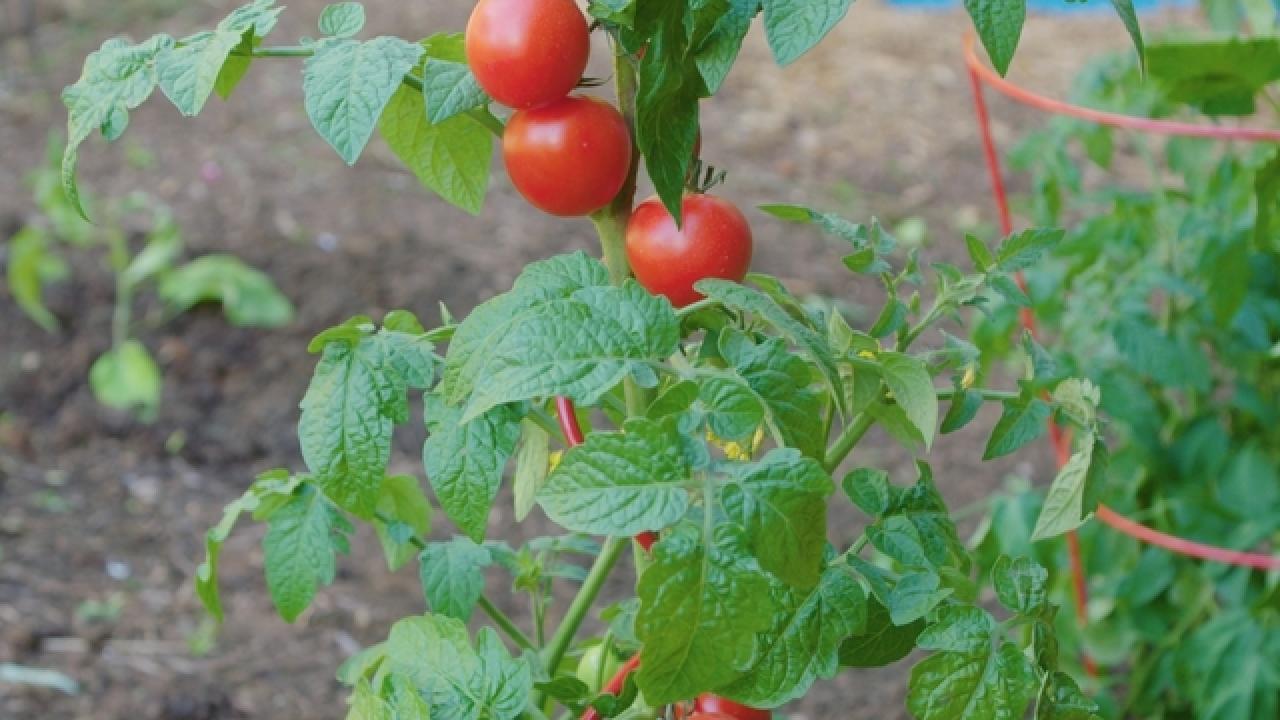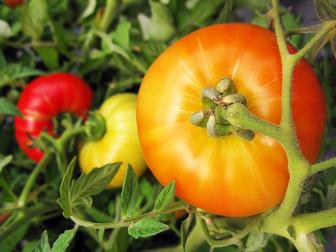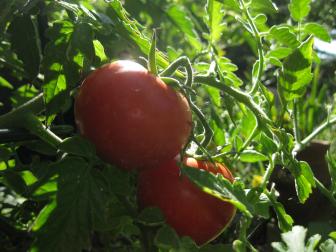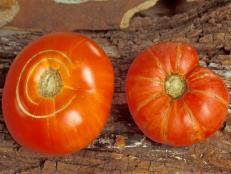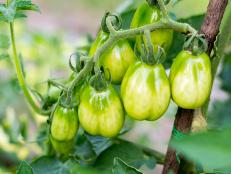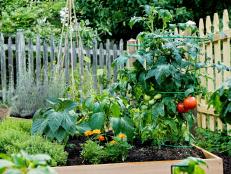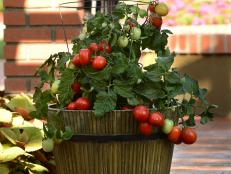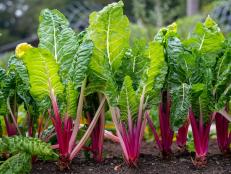How to Prune and Stake Tomato Plants
Try this advice on pruning, supporting and staking tomato plants for a healthier, more productive crop.

NinaMalyna / Shutterstock.com
Pinch off suckers and support plants with stakes for better health and productivity.
A great crop of tasty tomatoes starts long before the spade hits the soil. First, you need to know what size your tomato plant will reach at maturity, and plan accordingly. Then, get to staking, supporting and snipping so you can help keep tomatoes in tip-top shape.
How to Plant, Grow and Care for Tomatoes
Consider this your ultimate guide to choosing tomato plants, planting, growing and caring for tomatoes, and harvesting the best-tasting tomatoes ever.
Tomato Types
When choosing seeds to start or plants to purchase, first look at the type of tomato. The packet or label will describe the growth habit as determinate (or bush), or indeterminate (vining).
- If you are limited on space or growing in containers, plant a determinate variety that will grow smaller in stature and flower all at once. Determinate tomatoes such as ‘Roma’ are also a great choice for canners, as the flush of fruits matures at one convenient harvesting time.
- Indeterminate varieties are known as vining types because the tomato vines will continue to grow, flower and fruit as the season goes on. They wander and leap as they put out more and more tomatoes. These will need strong, large cages or trellis systems above five feet, as they can grow between 6-10 feet tall.
Short-Season Tomato Varieties 11 Photos
Live in a cool climate or have a short growing season? Try these tasty, super-productive, early-maturing tomatoes.
For gardeners really limited in space, don’t give up — grow up! A potted cherry tomato can easily be supported on an apartment balcony railing with soft supporting ties. Or, consider tiny trailing varieties growing down from hanging baskets.
Planting Tips
A key step in giving great support is to plant the stems deeply — burying at least one-half or two-thirds of the plant underneath the soil line. This ensures a healthy, stocky stem on a heavily rooted plant.
Companion Planting for Tomatoes
Learn what companion plants to grow alongside your tomatoes to improve tomato plants' health and boost your harvest.
Staking Tomatoes
Most tomatoes, whether bush or vining, benefit from staking to keep the main stem upright. With any luck, they'll be covered with heavy fruit and you'll be glad you took precautions to do so, avoiding broken stems and broken hearts.
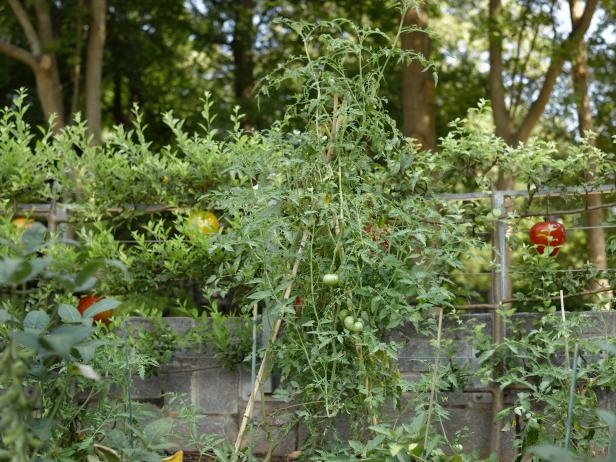
Photo by Angela West
An easy way to stake a tomato plant, especially the vine-like indeterminate varieties, is tee pee, simply assembled with three bamboo stakes gathered near the top with wire or raffia to forma tripod. The open apparatus also allows airflow through the plant, which helps prevent problems with powdery mildew and funguses.
For plants growing four feet or less, simply insert a bamboo cane or 36-48" wooden stake ten inches into the soil, just outside the diameter of the rootball. Do this when planted initially, as it's easier when the tomato is young and small to avoid damaging the roots. When the plant reaches 12" in height, loosely tie the stem to the supporting stake using natural, degradable twine or upcycled strips of t-shirts or hosiery. As it grows, repeat ties every 8-12" for best results.
For Tall Plants: Use a Trellis
For plants growing four feet or larger, it's a safe bet to support with a sturdy cage or trellis. Create circular cages with rolls of livestock fencing or concrete reinforcing wire cut into six foot lengths, bending the cut wires together to securely fasten the cylindrical shape. Place this over the young tomato plant, securing with two wooden stakes driven into the soil and tied to the cage.
How to Stake Tomatoes in Rows
For row crops, consider a method using twine and posts nicknamed the "Florida Weave," popular for its ease of installation and adaptability.
- Drive a 4-5' stake between every other plant in a row, then tightly tie twine to the first stake about 12" from the soil line.
- Run the length of twine by the first tomato, in-between the two plants, then around the second stake in a figure eight pattern.
- Tie off the twine when returning to the first stake so that there is good tension for supporting the plants.
- As the plants grow, twine is added at 12 -18" intervals up the stakes.
- Tuck in wayward stems to keep them tidily behind twine.
No matter your method, the key is keeping the branches off of the ground and upright, supporting the weight of the fruit.
Pruning Tomato Plants
Another key step in tomato TLC begins with a few snips. Here's how to prune tomato plants
- Remove any branches or foliage from the main stem below the first flower cluster. This is usually the first 10" above the soil and is good maintenance for clean, healthy foliage. Soil splashing onto the leaves can quickly transfer deadly diseases and fungus. Keep clean garden shears, dipping in a weak bleach water solution as you work from plant to plant.
- As your plant grows, it's also a good idea to remove suckers — those vigorous stems sprouting in-between a "V" of the stem and side branch. This will keep the plant open and airy, allowing better air circulation and focusing the plant’s energy on key growth areas.
- Lastly, for clean garden space and to prevent the spread of fungus or diseases, prune foliage that shows signs of potential issues. I readily snip leaves that show brown or yellow discoloration and clean my garden snip blades in a mild bleach solution between each cut. The idea is to stave off spreading of disease, not help it. Dispose of these affected leaves in a plastic garbage bag in your household trash — not the compost pile.
Simply planning ahead to create the right environment for a bush or vining tomato — and a few key snips early in the planting stage — will set it up for success and a bumper crop.
